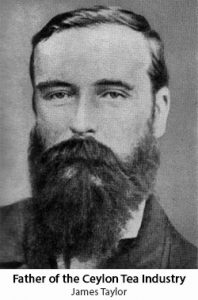Sri Lankan history revealed that in the year 1834, The British started cultivating Tea in their colonies in India and in Sri Lanka, which was well known by the rest of the world as ‘The British Ceylon’. The name Ceylon was given to this paradise Island nation Sri Lanka by The British government before Sri Lanka won its independence in the year 1948 and is also very famously known in the world as the Pearl or the Teardrop of the Indian ocean. Since then, this world-acclaimed superior quality Tea produced in Sri Lanka became reputed in the International Tea market as Pure Ceylon Tea. The first commercial planting of Tea in Ceylon was undertaken by James Taylor only in 1867 on a 19-acre land in Loolecondera estate in the hill capital, Kandy, where the land was turned into a Tea plantation later. James Taylor’s name entered into the history of Ceylon as the first pioneer and the founder of the Tea industry in Sri Lanka.
History
HISTORY OF CEYLON TEA

Thereafter, the first public Tea auction took place in Ceylon on the 30th of July in 1883 at the office of Messrs. Somerville and Company Colombo. Then in the year 1873, the first consignment of Tea was exported from Sri Lanka and the production of pure quality Ceylon Tea reached the one million kilo mark by the year 1884. Since then the production of pure Ceylon Tea had steadily increased to the extent that it has become the major export commodity, making Sri Lanka stand on top in the International Tea export market for its unique taste and aroma. The Tea plant grows from almost sea level to a higher elevation of 2,000 to 3,000 meters above the sea level in acid red yellow Podzolic to reddish-brown lateritic soils. The Tea-growing areas in Sri Lanka experience an annual rainfall of 1,500 to 5,300 millimeters (mm) or more, with a minimum temperature of 14˚C and a maximum temperature of 28˚C respectively. Today the habit of Tea-drinking has spread all over the world. It is second only to water as the number one loved beverage in the world. Most people drink Tea as a social drink because of its pleasant and stimulating character. Recent biomedical research confirms, that this century-old traditional beverage has the power to prevent illnesses and prolong life.

